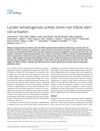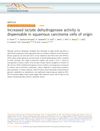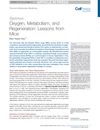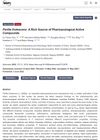Mapping Metabolism: Monitoring Lactate Dehydrogenase Activity Directly in Tissue
June 2018
in “
Journal of visualized experiments
”
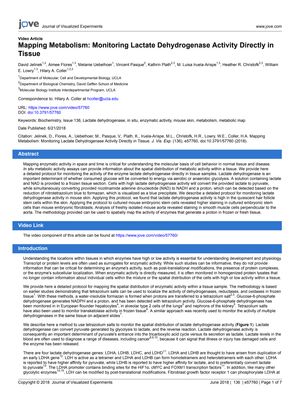
TLDR The document concludes that the technique allows for the detection of LDH activity in various tissues, showing where cells are actively metabolizing glucose.
The document describes a protocol for monitoring lactate dehydrogenase (LDH) activity directly in tissue samples, which is crucial for understanding cellular behavior in health and disease. LDH plays a key role in determining the pathway of glucose metabolism. The protocol involves providing a solution of lactate and NAD to a tissue section, where cells with high LDH activity convert lactate to pyruvate and NAD to NADH, with the reaction visualized by the reduction of nitrotetrazolium blue to formazan, seen as a blue precipitate. The method was applied to mouse skin, revealing high LDH activity in quiescent hair follicle stem cells. It was also used on cultured mouse embryonic stem cells, which showed higher staining than mouse embryonic fibroblasts, and on freshly isolated mouse aorta, where staining was observed in smooth muscle cells. This technique allows for the spatial mapping of enzymatic activity that generates a proton in tissues.
